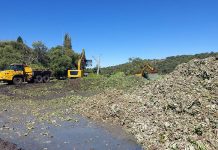
China registered a population decline in 2022 for the first time in 60 years. According to data released by China’s National Bureau of Statistics, the nation was home to 1,412 billion people in 2022, which was 850 000 fewer than in 2021.
China now joined a host of other countries, mostly in Europe, that had negative population growth. Russia’s population was set to start declining by 2030.
Experts warned that if sustained, the trend could pose a problem for the rest of the world, with China, as the second-largest economy, playing a key role in driving global growth.
Frederic Neumann, HSBC’s chief Asia economist, said: “The Chinese economy is entering a critical transition phase, [where it is] no longer able to rely on an abundant, cost-competitive labour force to drive industrialisation and growth.”
For South Africa’s agricultural exporters, lower demand in key markets was worrying, according to Loffie Brandt, head of sales enablement at Absa AgriBusiness. He said that China’s population was set to halve within 80 years, which meant the demand for products would be half of today’s figure.
“Products such as macadamias, which rely on China for a significant percentage of uptake, need to find other markets. But with population declines in most of the developed world, young farmers should be asking where future markets lie and what products will be in high demand.”
With Africa’s population continuing to grow, it was estimated that 38% of the world’s population would be living on the continent by 2100, compared with about 18% today, Brandt said. The question was whether buying power would follow suit.
“We don’t know whether the buying power lost in other markets will be replaced by Africa, or its demands will be completely different.”
Some commodities, nonetheless, were expected to do well regardless of lower population figures.
Norman Celliers, CEO of AFGRI, said that consumption per capita was an important factor to consider.
“Even if the population growth remains the same, consumption of certain commodities will rise. As people follow more healthy eating patterns, commodities such as nuts, blueberries and avocados are increasing in demand. People are spending more on those products than they were in the past.”
He noted that demand for food was set to outstrip supply for a number of years. Once it started stabilising, however, only the best farmers would survive.
“Farming is getting more expensive. You need sophisticated technology and equipment to succeed and it comes at a price, which you can’t afford as a small farmer.
“Farmers must stick to their areas of expertise and get better in what they do, so they can beat their competitors.”











